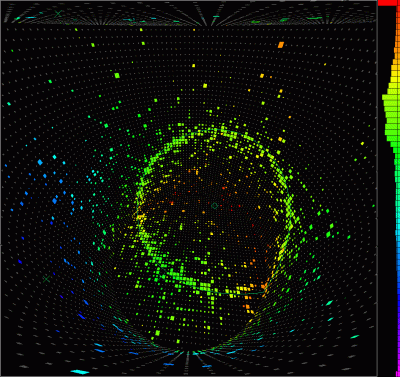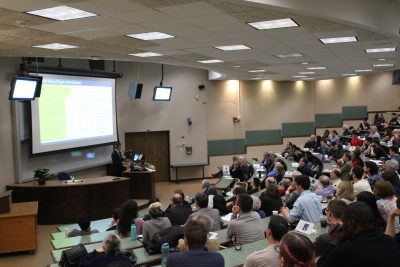The University of Connecticut, Department of Physics, is proud to announce that on September 23, 2022, Professor Donna Strickland of the Department of Physics and Astronomy at the University of Waterloo will be presenting the 2020 Distinguished Katzenstein Lecture.  Prof. Strickland is one of the recipients of the 2018 Nobel Prize in Physics for developing chirped pulse amplification with Gérard Mourou, her PhD supervisor. They published this Nobel-winning research in 1985 when Strickland was a PhD student at the University of Rochester in New York State. Together they paved the way for the most intense laser pulses ever created. The research has several applications today in industry and medicine, including the cutting of a patient’s cornea in laser eye surgery and the machining of small glass parts for use in cell phones.
Prof. Strickland is one of the recipients of the 2018 Nobel Prize in Physics for developing chirped pulse amplification with Gérard Mourou, her PhD supervisor. They published this Nobel-winning research in 1985 when Strickland was a PhD student at the University of Rochester in New York State. Together they paved the way for the most intense laser pulses ever created. The research has several applications today in industry and medicine, including the cutting of a patient’s cornea in laser eye surgery and the machining of small glass parts for use in cell phones.
Prof. Strickland earned a Bachelor in Engineering from McMaster University and a PhD in optics from the University of Rochester. She was a research associate at the National Research Council Canada, a physicist at Lawrence Livermore National Laboratory, and a member of technical staff at Princeton University. In 1997, she joined the University of Waterloo, where her ultrafast laser group develops high-intensity laser systems for nonlinear optics investigations. She is a recipient of a Sloan Research Fellowship, the Ontario Premier’s Research Excellence Award, and a Cottrell Scholar Award. She received the Rochester Distinguished Scholar Award and the Eastman Medal from the University of Rochester.
Prof. Strickland served as the president of the Optical Society (OSA) in 2013 and is a fellow of OSA, the Royal Society of Canada, and SPIE (International Society for Optics and Photonics). She is an honorary fellow of the Canadian Academy of Engineering and the Institute of Physics. She received the Golden Plate Award from the Academy of Achievement, is in the International Women’s Forum Hall of Fame, and holds numerous honorary doctorates.
 (pictured at left) is world-famous for her discovery of pulsars in 1967. Pulsars are a special type of neutron star, the rotating dense remnant of a massive star. Pulsars have highly magnetic surfaces and emit a beam of electromagnetic radiation along their poles. This beam of light moves into and out of our line-of-sight at quick, constant intervals, appearing as a regular “pulse” of light.
(pictured at left) is world-famous for her discovery of pulsars in 1967. Pulsars are a special type of neutron star, the rotating dense remnant of a massive star. Pulsars have highly magnetic surfaces and emit a beam of electromagnetic radiation along their poles. This beam of light moves into and out of our line-of-sight at quick, constant intervals, appearing as a regular “pulse” of light.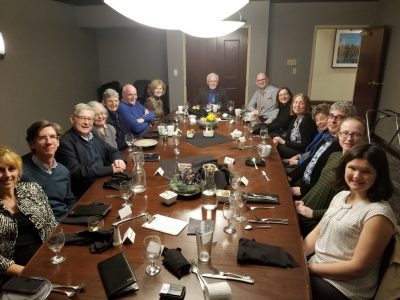
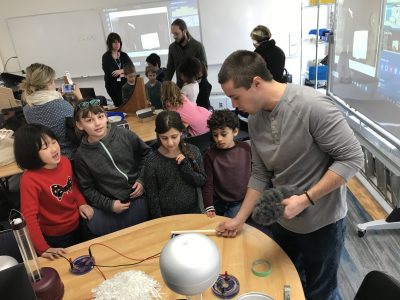
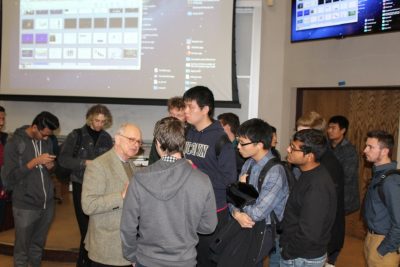

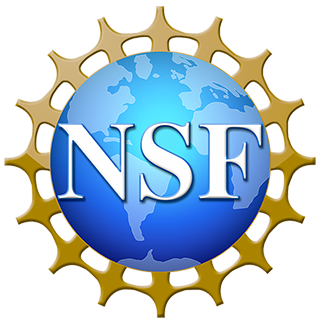
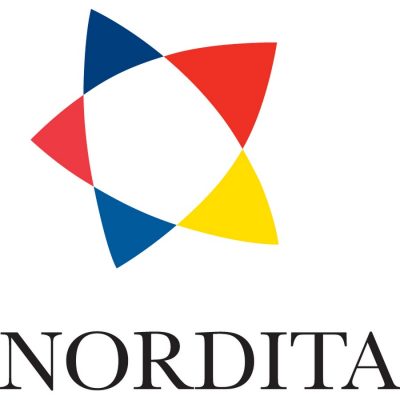
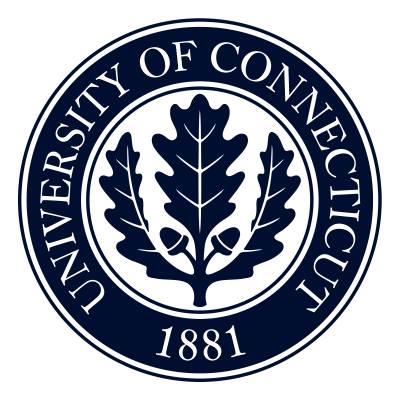

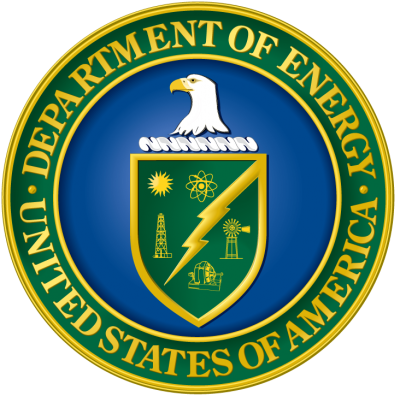

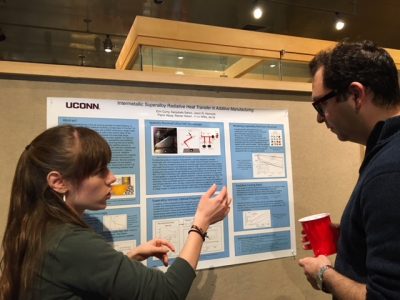
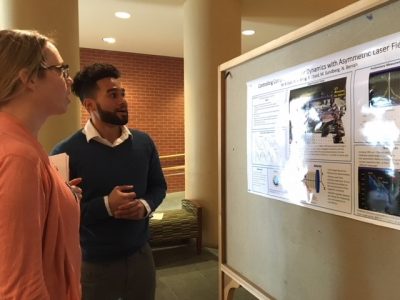
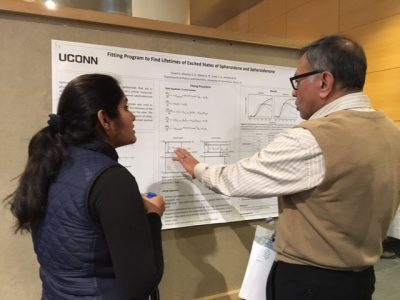
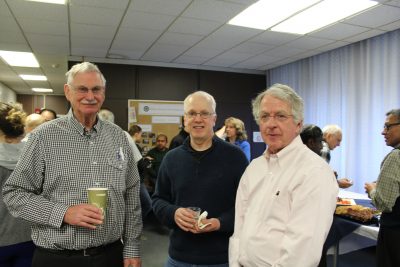 Friday afternoon on April 20, 2018 the UConn Physics Department held a colloquium in honor of Professor Douglas Hamilton on the occasion of his retirement from active service on the faculty. The colloquium was MC’ed by Prof. Jason Hancock, who surveyed the highlights of a career spanning four decades marked by notable accomplishments in research, teaching, and service. Several of Doug’s former students also presented tributes to their mentor, some in person, and some by video or written message, expressing their gratitude for what they learned from him, both by instruction and example. At the end of the hour, Doug presented some final comments, which were followed by a standing ovation in recognition of Doug’s many contributions to our field, our department, and the University. Doug, you will be missed!
Friday afternoon on April 20, 2018 the UConn Physics Department held a colloquium in honor of Professor Douglas Hamilton on the occasion of his retirement from active service on the faculty. The colloquium was MC’ed by Prof. Jason Hancock, who surveyed the highlights of a career spanning four decades marked by notable accomplishments in research, teaching, and service. Several of Doug’s former students also presented tributes to their mentor, some in person, and some by video or written message, expressing their gratitude for what they learned from him, both by instruction and example. At the end of the hour, Doug presented some final comments, which were followed by a standing ovation in recognition of Doug’s many contributions to our field, our department, and the University. Doug, you will be missed!